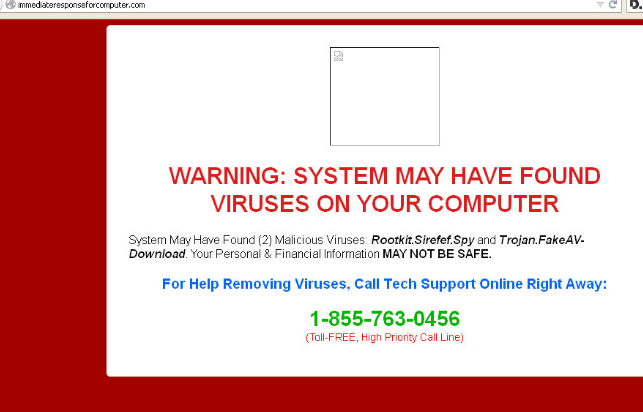What is Your PC may have been infected Virus
Your PC may have been infected Virus refers to a scam that falsely informs you that your computer has been infected with malware. You may encounter this and similar scams when browsing high-risk websites or if your computer is infected with adware. The fake alerts inform you that your anti-virus subscription has expired and that your computer is now infected with malware. These notifications are fake and they are not harmful if you ignore them. If you do interact with them, though, you can end up downloading malware or giving money to scammers.
Your PC May Have Been Infected is a classic example of fake virus alerts. There are various ways that users might be redirected to them, but most often it’s either because of adware or because they visit risky websites. The majority of users have probably encountered these scams at least a few times while browsing. As we’ve previously stated, as long as you don’t interact with the scams, they’re not dangerous.
This Your PC may have been infected Virus is using Avira’s name to scam users. The scam says that because your Avira subscription has expired, your computer may now be exposed to malware. On the same website, another alert would also claim malware has indeed been detected on your computer. Because people are more likely to trust notifications when they see a familiar name, scammers frequently use the name of well-known anti-virus products. But these fake alerts are unrelated to the anti-virus software.
These scams typically aim to deceive users into installing dubious software, scam users of their money, or profit from anti-virus affiliate programs. Because there are so many scams that are identical to “Avira – Your Pc May Have Been Infected,” it is difficult to identify what the goal of the one you have encountered is. However, as long as you don’t interact with it, you should be okay.
If you interact with the fake alert, you could even be taken to the real Avira website. Anti-virus affiliate programs let users earn money by redirecting people to the programs. Every subscription that is purchased via the redirect earns affiliates money. By showing users bogus notifications, scammers are actually abusing the anti-virus affiliate programs. Avira is not involved in this and has no influence over how other people use its affiliate program. But, even if the subscription would be legitimate, avoid buying it if you get redirected to it by a scam.
Avira
Your PC may have been infected!
THREAT MUST BE PREVENTED!
Your Avira Subscription may have been expired!
Renew now to keep your pc protected.
If your PC is unprotected, it is at risk for viruses and other malware.
Proceed…
These and similar virus alert scams are fairly simple to identify. The fact that false virus alerts pop up in your browser is the biggest giveaway. Since your browser is unable to detect malware on your computer, it will never display a real virus alert. You should only rely on your anti-virus software to display genuine virus notifications.
It’s also important to note that alerts of this type may include phone numbers for fake tech support. Such scams are known as tech support scams. Calling one of the numbers listed in these scams will put you in contact with professional scammers posing as certified Microsoft (or Apple, depending on the scam) technicians. They would ask for remote access to your computer, potentially steal your files, and even install an infection. Additionally, they would demand payment for the services they supposedly provided. Genuine Microsoft alerts will never display phone numbers.
What triggers redirects to these scams
Redirects to tech support scams may be triggered by infections like adware or by users visiting high-risk websites. The latter is usually the case. Certain websites (sites with pornographic or pirated content, for example) are considered to be high-risk because of the ads they expose users to. Clicking on anything on those sites can trigger random redirects. However, a good adblocker program can easily block both redirects and random ads.
Random redirects, although this happens less frequently, might also be a symptom of an adware infection. If you get redirected when browsing safe websites, your computer most certainly has adware installed. Infections like adware and browser hijackers install on users’ computers using a sneaky installation method and without users’ explicit permission. It’s a rather controversial installation method, and programs that use it are often detected as potential threats by anti-virus programs.
Adware and other similar infections are added to free software as extra offers. Software bundling is what this method is known as. Despite being optional, unless users specifically uncheck them, the offers are preselected to install automatically. Users frequently miss the offers and are unable to deselect them because they are hidden in settings users rarely use. But, deselecting these offers won’t be difficult if you install free software correctly.
To correctly install free software without the extra offers, use Advanced (Custom) settings. If you choose Default settings, as suggested by the installation window, all extra offers will be permitted to install automatically. However, Advanced settings will show every added offer. Furthermore, you will have the option to deselect all offers. It’s usually a good idea to decline every offer because allowing them to install will just cause your computer to become filled with junk programs that can be challenging to remove once fully installed. Unchecking a few boxes during installation is considerably easier and takes far less time than uninstalling annoying infections like adware.
Your PC may have been infected Virus removal
If you were redirected to the scam when browsing high-risk websites, you don’t need to do anything to remove Your PC may have been infected Virus. Simply close the window and carry on with your business. To prevent these redirects in the future, install an adblocker.
You should also scan your computer with anti-virus software to check for an adware infection. Adware can be quite persistent and difficult to remove manually, so we recommend using anti-virus software. If the redirects are caused by the adware, they will stop as soon as the adware is removed.
Offers
Download Removal Toolto scan for Your PC may have been infected VirusUse our recommended removal tool to scan for Your PC may have been infected Virus. Trial version of provides detection of computer threats like Your PC may have been infected Virus and assists in its removal for FREE. You can delete detected registry entries, files and processes yourself or purchase a full version.
More information about SpyWarrior and Uninstall Instructions. Please review SpyWarrior EULA and Privacy Policy. SpyWarrior scanner is free. If it detects a malware, purchase its full version to remove it.

WiperSoft Review Details WiperSoft (www.wipersoft.com) is a security tool that provides real-time security from potential threats. Nowadays, many users tend to download free software from the Intern ...
Download|more


Is MacKeeper a virus? MacKeeper is not a virus, nor is it a scam. While there are various opinions about the program on the Internet, a lot of the people who so notoriously hate the program have neve ...
Download|more


While the creators of MalwareBytes anti-malware have not been in this business for long time, they make up for it with their enthusiastic approach. Statistic from such websites like CNET shows that th ...
Download|more
Quick Menu
Step 1. Uninstall Your PC may have been infected Virus and related programs.
Remove Your PC may have been infected Virus from Windows 8
Right-click in the lower left corner of the screen. Once Quick Access Menu shows up, select Control Panel choose Programs and Features and select to Uninstall a software.
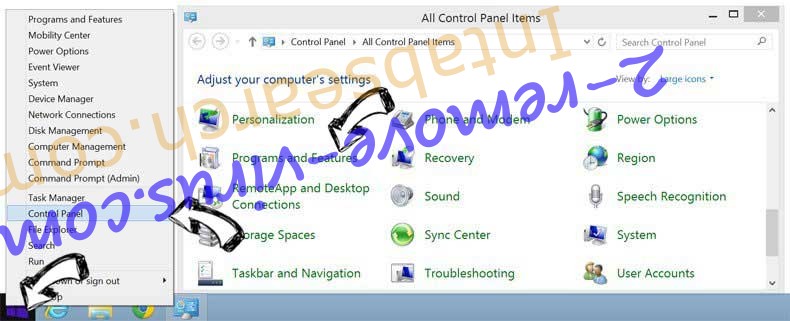

Uninstall Your PC may have been infected Virus from Windows 7
Click Start → Control Panel → Programs and Features → Uninstall a program.
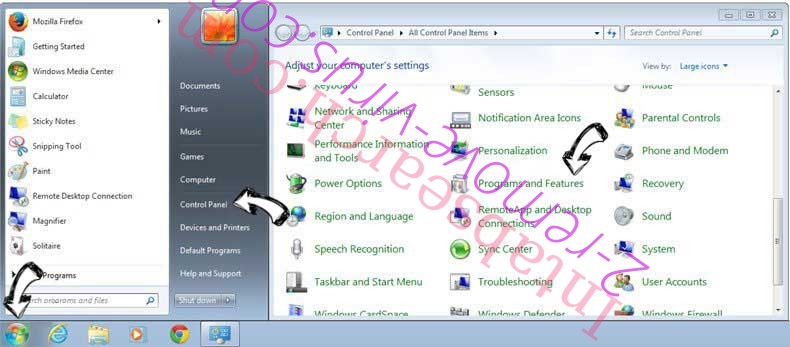

Delete Your PC may have been infected Virus from Windows XP
Click Start → Settings → Control Panel. Locate and click → Add or Remove Programs.
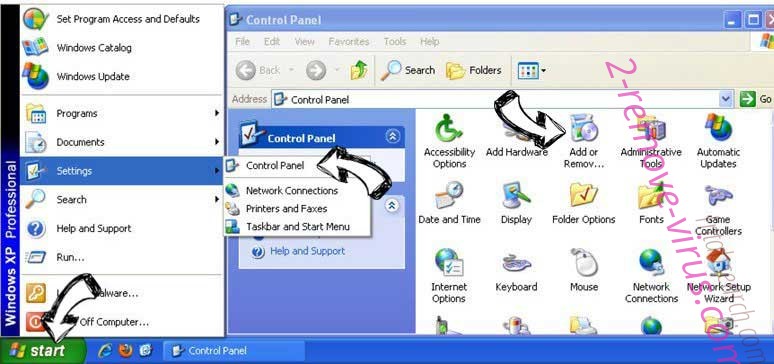

Remove Your PC may have been infected Virus from Mac OS X
Click Go button at the top left of the screen and select Applications. Select applications folder and look for Your PC may have been infected Virus or any other suspicious software. Now right click on every of such entries and select Move to Trash, then right click the Trash icon and select Empty Trash.
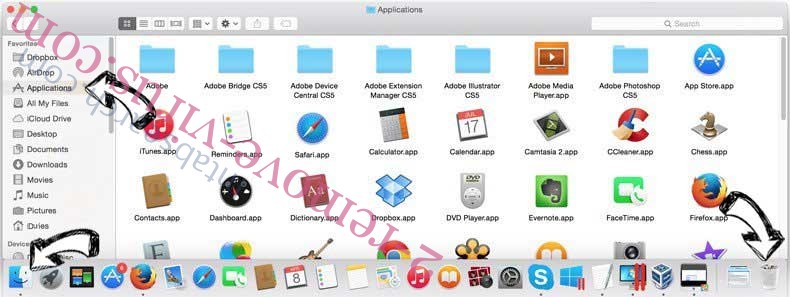

Step 2. Delete Your PC may have been infected Virus from your browsers
Terminate the unwanted extensions from Internet Explorer
- Tap the Gear icon and go to Manage Add-ons.

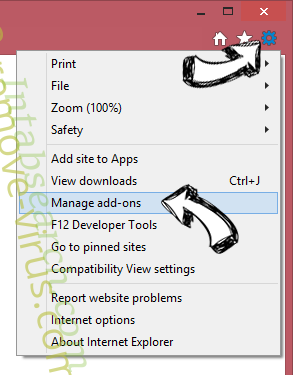
- Pick Toolbars and Extensions and eliminate all suspicious entries (other than Microsoft, Yahoo, Google, Oracle or Adobe)

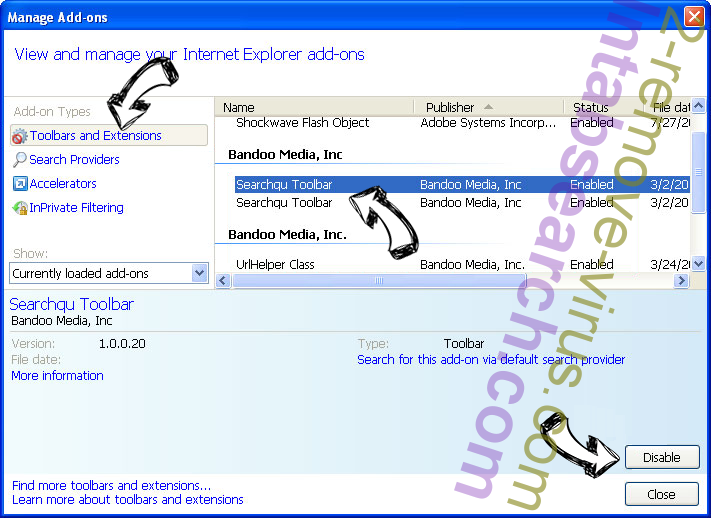
- Leave the window.
Change Internet Explorer homepage if it was changed by virus:
- Tap the gear icon (menu) on the top right corner of your browser and click Internet Options.

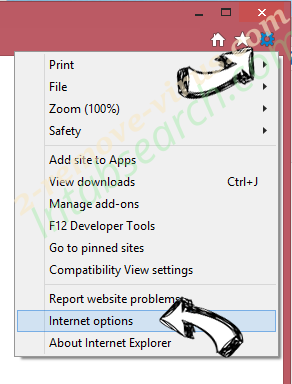
- In General Tab remove malicious URL and enter preferable domain name. Press Apply to save changes.

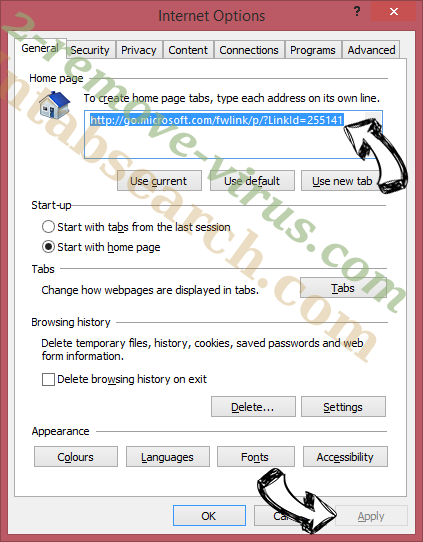
Reset your browser
- Click the Gear icon and move to Internet Options.

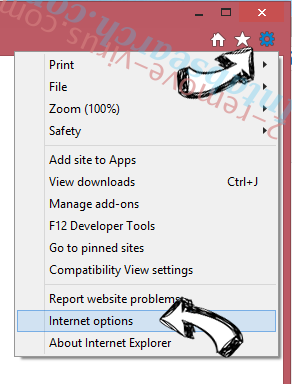
- Open the Advanced tab and press Reset.

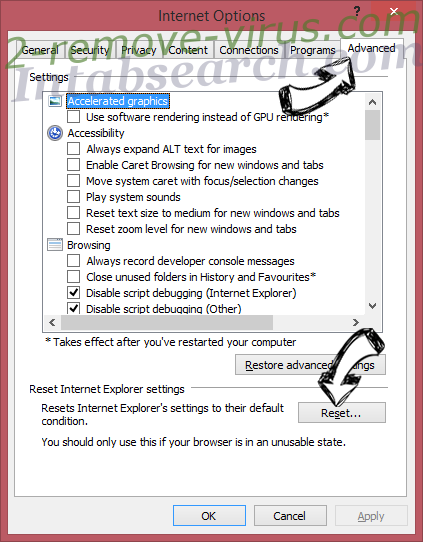
- Choose Delete personal settings and pick Reset one more time.

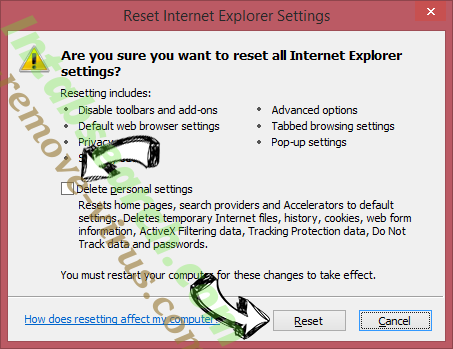
- Tap Close and leave your browser.

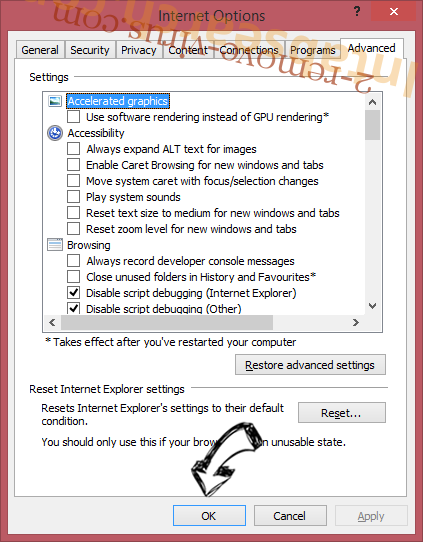
- If you were unable to reset your browsers, employ a reputable anti-malware and scan your entire computer with it.
Erase Your PC may have been infected Virus from Google Chrome
- Access menu (top right corner of the window) and pick Settings.

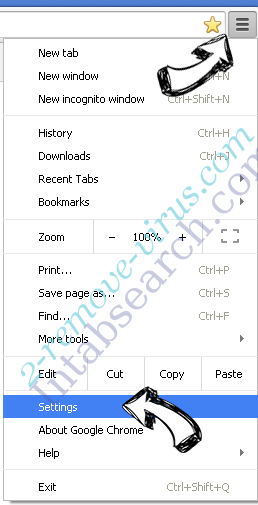
- Choose Extensions.

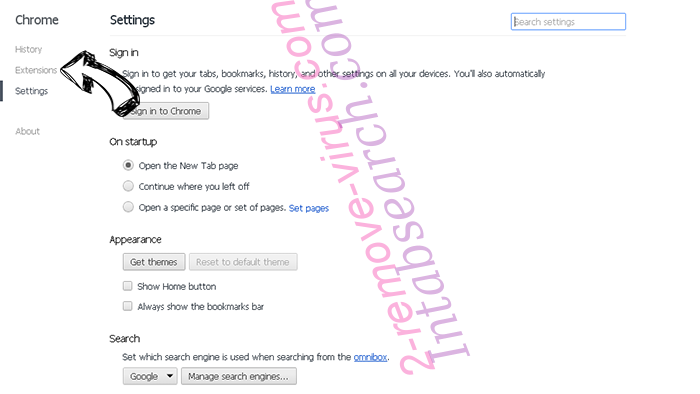
- Eliminate the suspicious extensions from the list by clicking the Trash bin next to them.

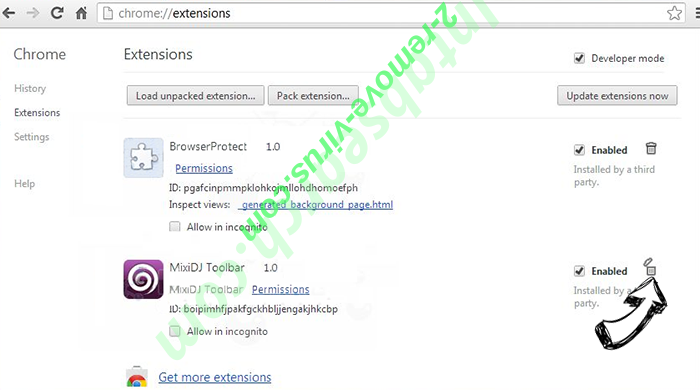
- If you are unsure which extensions to remove, you can disable them temporarily.

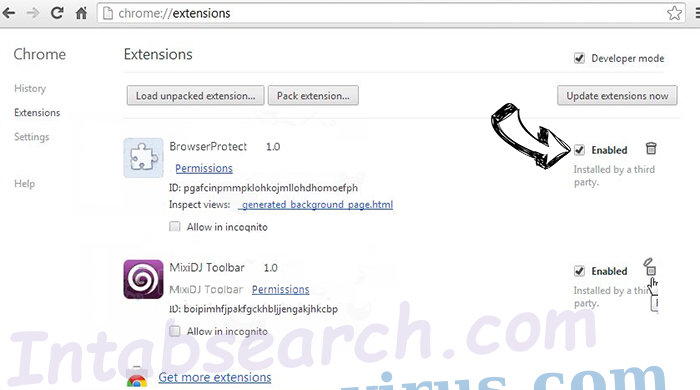
Reset Google Chrome homepage and default search engine if it was hijacker by virus
- Press on menu icon and click Settings.

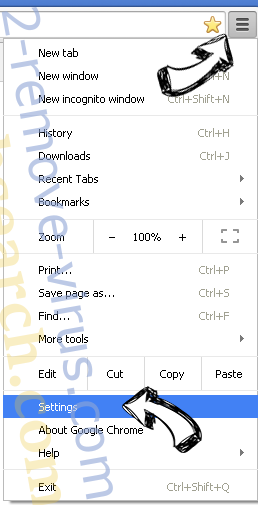
- Look for the “Open a specific page” or “Set Pages” under “On start up” option and click on Set pages.

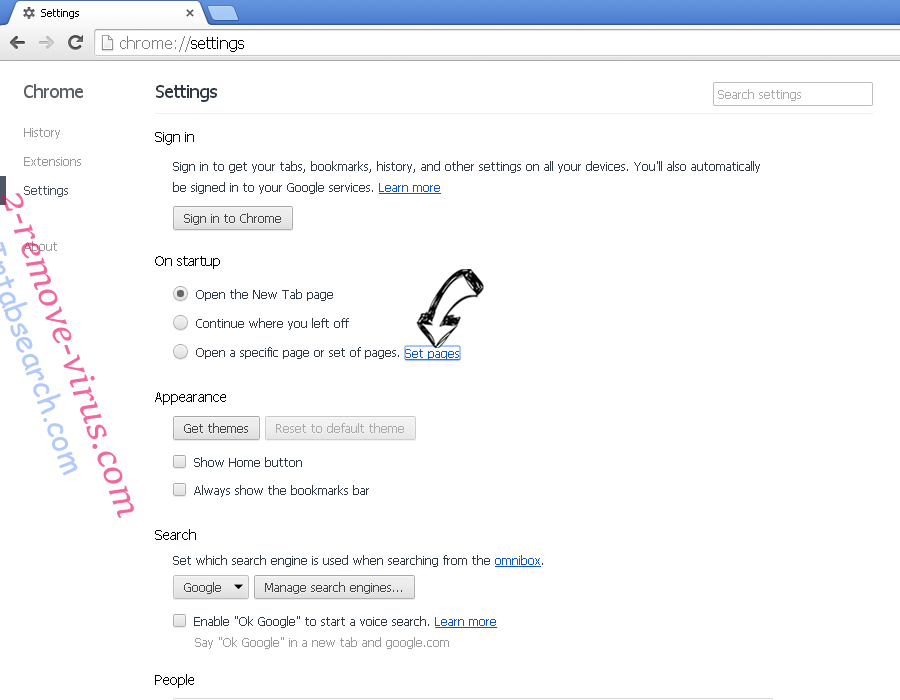
- In another window remove malicious search sites and enter the one that you want to use as your homepage.

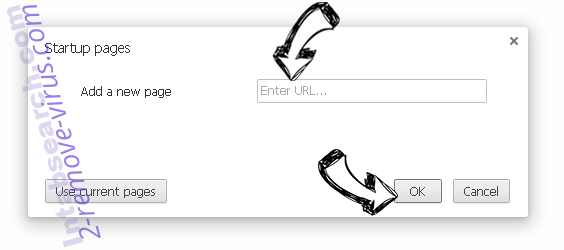
- Under the Search section choose Manage Search engines. When in Search Engines..., remove malicious search websites. You should leave only Google or your preferred search name.

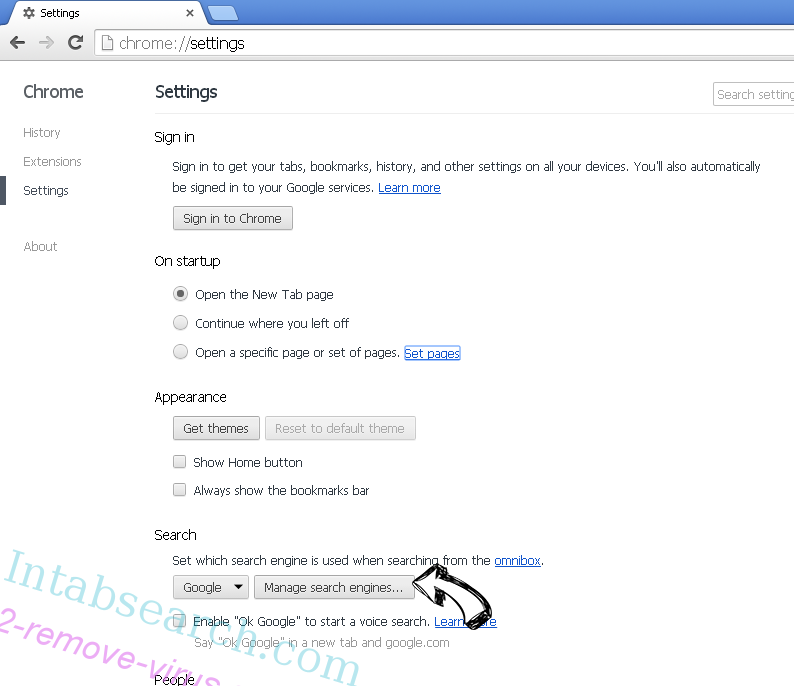

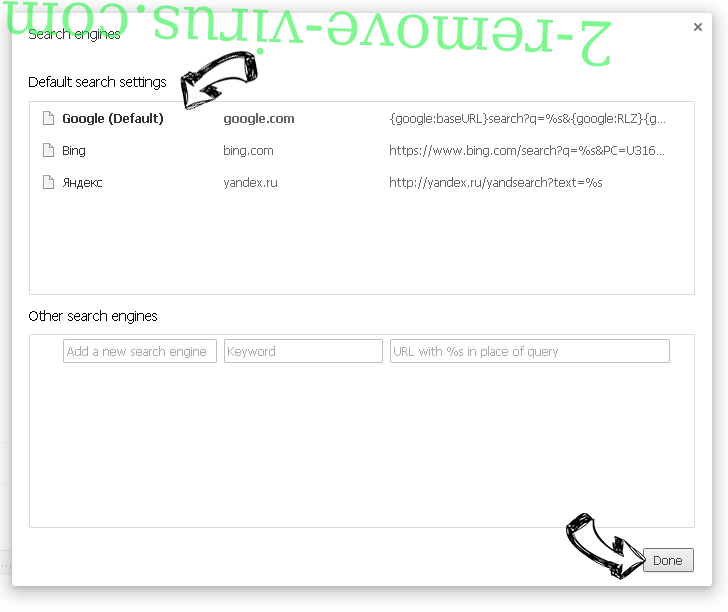
Reset your browser
- If the browser still does not work the way you prefer, you can reset its settings.
- Open menu and navigate to Settings.

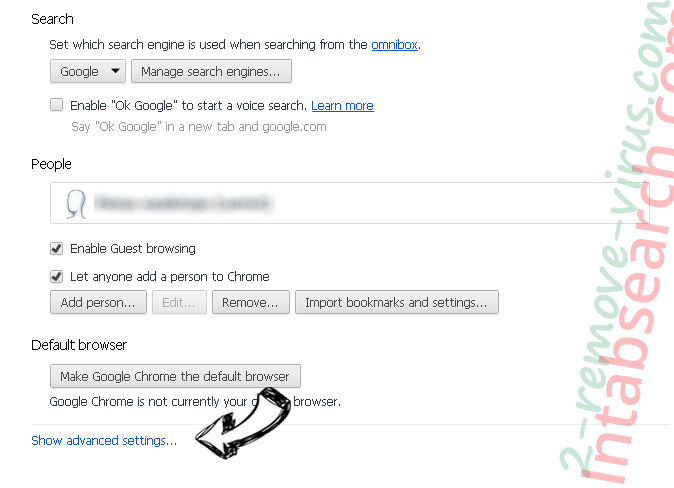
- Press Reset button at the end of the page.

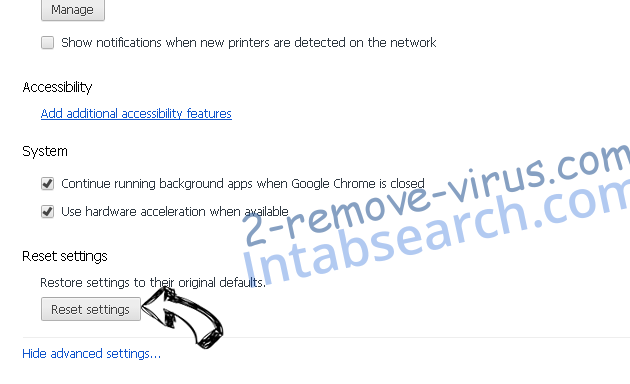
- Tap Reset button one more time in the confirmation box.

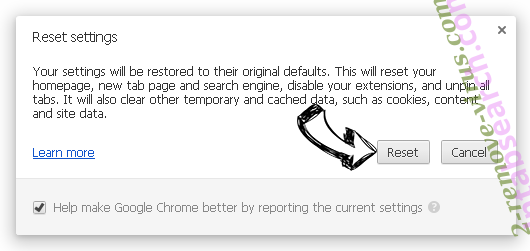
- If you cannot reset the settings, purchase a legitimate anti-malware and scan your PC.
Remove Your PC may have been infected Virus from Mozilla Firefox
- In the top right corner of the screen, press menu and choose Add-ons (or tap Ctrl+Shift+A simultaneously).

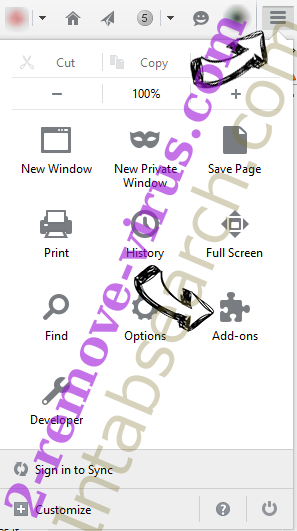
- Move to Extensions and Add-ons list and uninstall all suspicious and unknown entries.

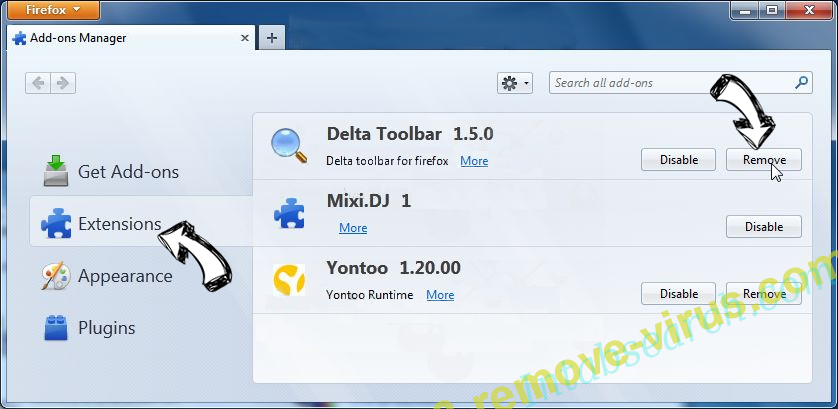
Change Mozilla Firefox homepage if it was changed by virus:
- Tap on the menu (top right corner), choose Options.

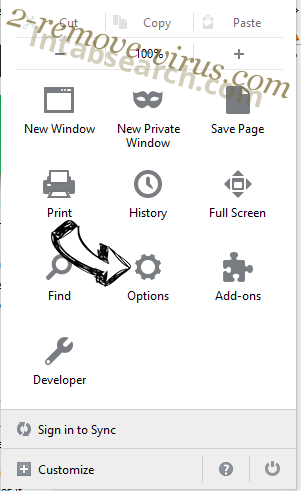
- On General tab delete malicious URL and enter preferable website or click Restore to default.

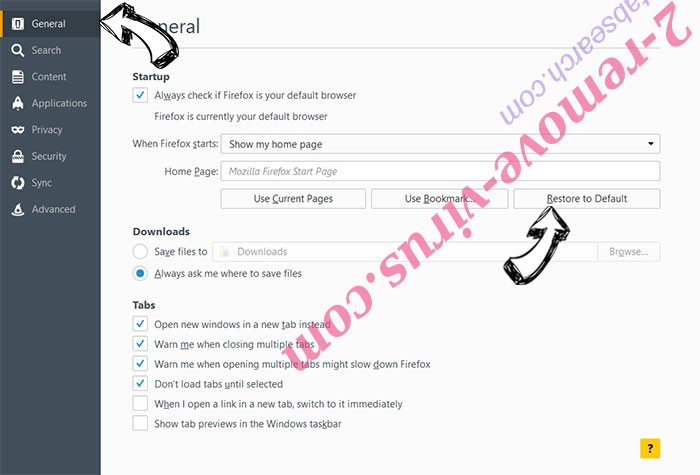
- Press OK to save these changes.
Reset your browser
- Open the menu and tap Help button.

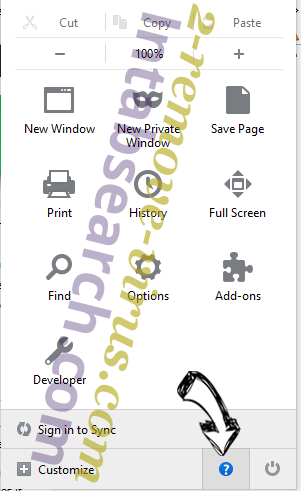
- Select Troubleshooting Information.


- Press Refresh Firefox.

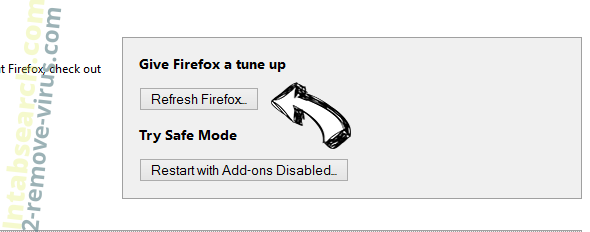
- In the confirmation box, click Refresh Firefox once more.


- If you are unable to reset Mozilla Firefox, scan your entire computer with a trustworthy anti-malware.
Uninstall Your PC may have been infected Virus from Safari (Mac OS X)
- Access the menu.
- Pick Preferences.

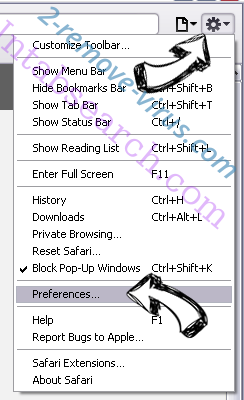
- Go to the Extensions Tab.

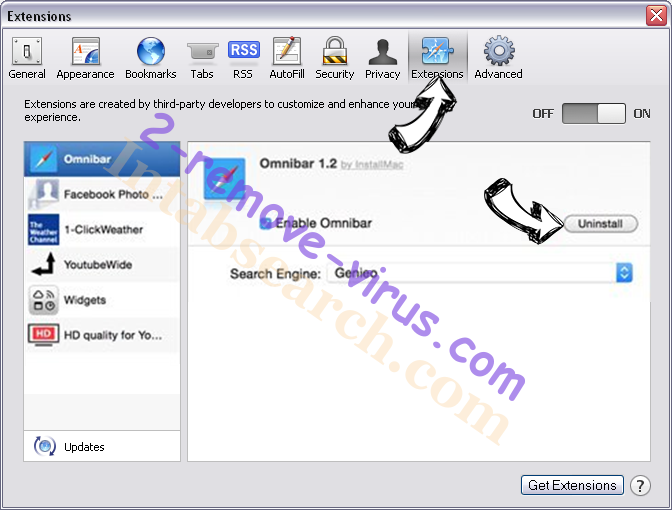
- Tap the Uninstall button next to the undesirable Your PC may have been infected Virus and get rid of all the other unknown entries as well. If you are unsure whether the extension is reliable or not, simply uncheck the Enable box in order to disable it temporarily.
- Restart Safari.
Reset your browser
- Tap the menu icon and choose Reset Safari.

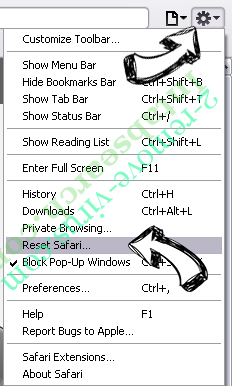
- Pick the options which you want to reset (often all of them are preselected) and press Reset.

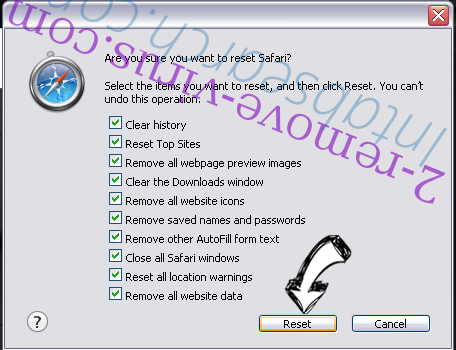
- If you cannot reset the browser, scan your whole PC with an authentic malware removal software.
Site Disclaimer
2-remove-virus.com is not sponsored, owned, affiliated, or linked to malware developers or distributors that are referenced in this article. The article does not promote or endorse any type of malware. We aim at providing useful information that will help computer users to detect and eliminate the unwanted malicious programs from their computers. This can be done manually by following the instructions presented in the article or automatically by implementing the suggested anti-malware tools.
The article is only meant to be used for educational purposes. If you follow the instructions given in the article, you agree to be contracted by the disclaimer. We do not guarantee that the artcile will present you with a solution that removes the malign threats completely. Malware changes constantly, which is why, in some cases, it may be difficult to clean the computer fully by using only the manual removal instructions.
